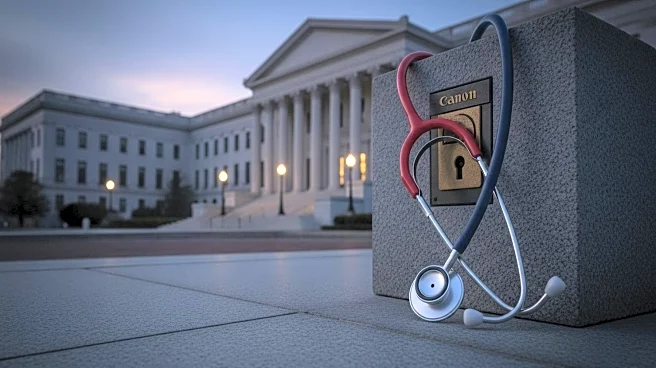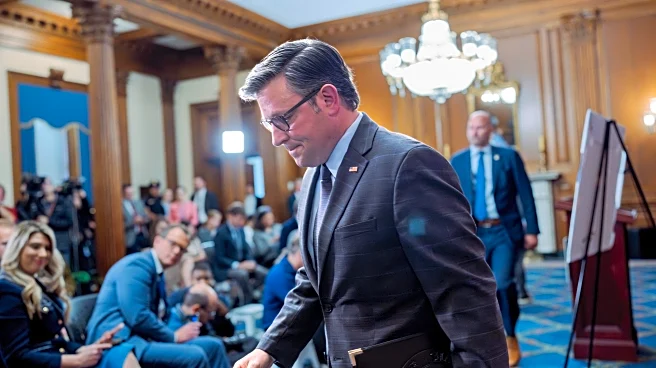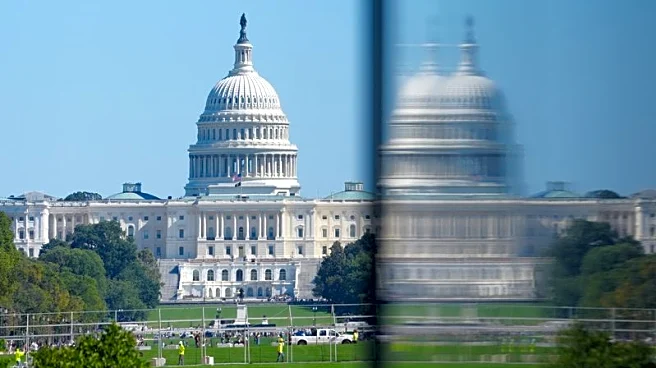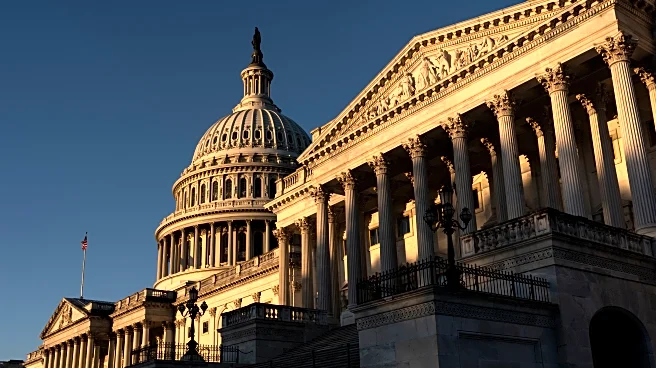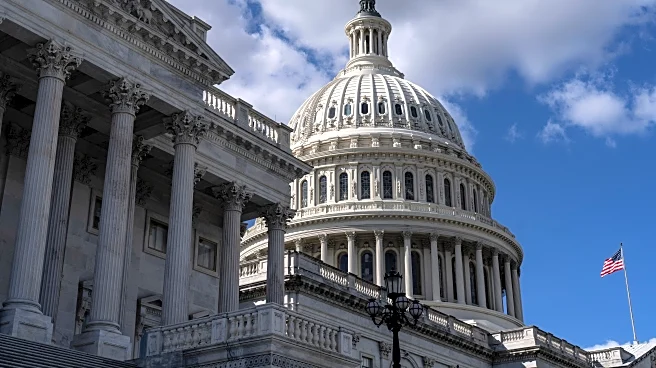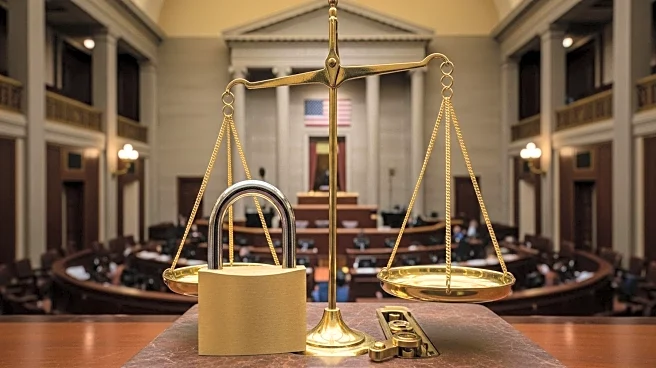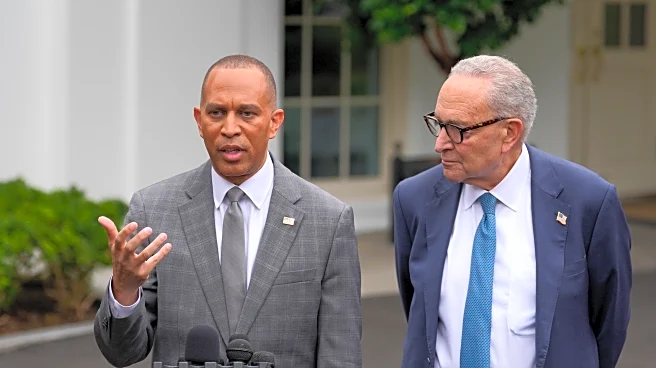What's Happening?
The U.S. government shutdown has entered its fourth day as Congress remains deadlocked over funding resolutions. The Senate has repeatedly failed to pass competing plans to temporarily fund the government. A Republican proposal, which has already passed the House, aims to extend funding through November 21, while a Democratic counterproposal seeks to extend funding through October, including an extension of pandemic-era health care tax credits. Senate Majority Leader John Thune has indicated that negotiations on these credits will only occur after government funding is secured. Despite some bipartisan support for the Republican plan, the Senate has not reached the necessary 60-vote threshold to pass the bill. The impasse has led to the White House planning cuts to programs, particularly in areas with significant Democratic voter bases, which Democrats have criticized as intimidation tactics.
Why It's Important?
The ongoing government shutdown has significant implications for federal operations and employees, as well as for public services. The deadlock in Congress highlights the deep partisan divisions that continue to affect legislative processes. The shutdown impacts various sectors, including transportation projects and federal employment, with potential long-term economic consequences. The White House's decision to target cuts in Democratic strongholds could exacerbate political tensions and influence future negotiations. The situation underscores the challenges of governance in a divided political landscape, affecting public confidence in government institutions.
What's Next?
As the shutdown continues, pressure mounts on Congress to reach a resolution. The Senate is not expected to hold further votes over the weekend, but discussions may continue informally. The White House's budgetary decisions could face legal challenges, as Democrats argue that the cuts are unconstitutional. The outcome of these lawsuits could set precedents for executive power in budgetary matters. Stakeholders, including federal employees and affected communities, are likely to increase advocacy efforts to push for a resolution. The political fallout from the shutdown may influence upcoming elections and legislative priorities.
Beyond the Headlines
The shutdown raises questions about the balance of power between the executive and legislative branches, particularly regarding budgetary control. The legal challenges to the White House's cuts could redefine the scope of executive authority in fiscal matters. Additionally, the shutdown highlights the vulnerability of federal employees and contractors, who face financial uncertainty during these periods. The situation may prompt discussions on reforming the budgetary process to prevent future shutdowns and ensure more stable government operations.

